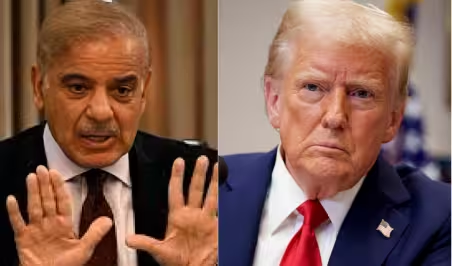
Pakistan reaches out to the US: Fear of Indian BrahMos Missile Strike Sparks Diplomatic Moves
Background: India-Pakistan Conflict & Military Escalation
India launched Operation Sindoor, targeting terror hubs in Pakistan and Pakistan-occupied Kashmir (PoK). India initiated in response to the Pahalgam terror incident on April 22, focusing on terrorist hotspots in Pakistan and Pakistan-occupied Kashmir (PoK) as a result Pakistan reaches out to US .
In response, Pakistan attempted aerial retaliation, which was effectively repelled by Indian forces. However, India escalated its countermeasures, deploying BrahMos supersonic cruise missiles to strike 11 Pakistani airbases, crippling key military installations.
Pakistan’s Urgent Appeal to the US
Fearing further escalation, Pakistan reached out to the United States, expressing concerns that India might target its nuclear facilities with BrahMos missiles.
- US National Security Advisor Marco Rubio held discussions with Indian External Affairs Minister S. Jaishankar regarding the situation.
- Pakistan requested US mediation, but India firmly rejected third-party involvement, stating that the issue was a bilateral matter.
- Direct DGMO Talks: Following US intervention, Pakistan’s Director General of Military Operations (DGMO) contacted his Indian counterpart, leading to a ceasefire agreement on May 10.
India’s Military Strategy & BrahMos Deployment
India’s BrahMos missile strikes targeted high-value Pakistani airbases, including:
- Nur Khan Airbase (Rawalpindi) – A key Pakistani Air Force installation.
- Jacobabad & Bholari Airbases – Strategic locations for Pakistan’s aerial defense.
- Sargodha & Skardu Airbases – Vital for Pakistan’s northern military operations.
The BrahMos missile, developed jointly by India and Russia, is known for its speed, accuracy, and ability to evade enemy radar.
Global Reactions & Future Implications
The crisis has drawn international attention, with global powers urging de-escalation:
- China has called for restraint, emphasizing the need for a lasting ceasefire.
- The US has advised Pakistan to engage directly with India, avoiding third-party mediation.
- India remains firm on its counter-terrorism policy, stating that terrorists will be neutralized even across the border if necessary.
What’s Next? Future Implications of US Involvement
The outcome of Pakistan’s outreach to the US could lead to:
- Stronger diplomatic negotiations between India and Pakistan.
- Increased US involvement in South Asian security affairs.
- Potential shifts in India’s military strategy, focusing on long-term deterrence.
Stay informed with the latest news and updates – only on Rapido Updates.
1 thought on “Pakistan reaches out to US: Fear of Indian BrahMos Missile Strike Sparks Diplomatic Moves”